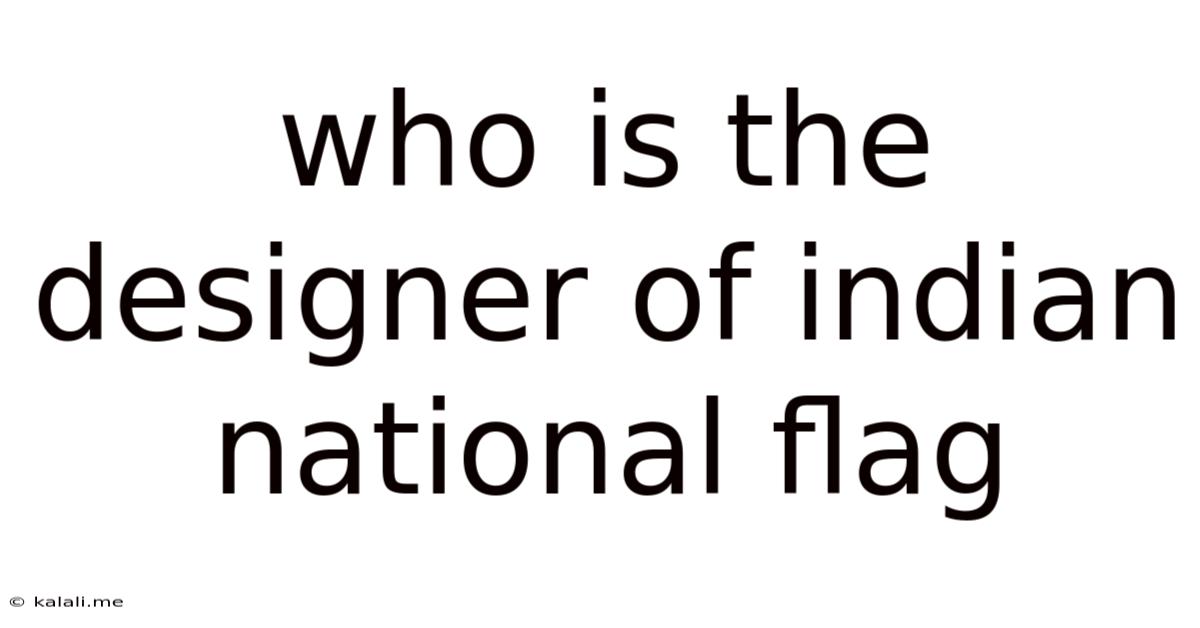Who Is The Designer Of Indian National Flag
Kalali
Jun 11, 2025 · 3 min read

Table of Contents
Who Designed the Indian National Flag? Unveiling the Story Behind the Tricolour
The Indian national flag, a powerful symbol of freedom and national pride, is instantly recognizable worldwide. Its vibrant saffron, white, and green stripes, punctuated by the Ashoka Chakra, evoke a sense of history and unity. But who is the brilliant mind behind this iconic design? This article delves into the fascinating story of the flag's creation and reveals the designer responsible for this enduring emblem of India.
While the flag itself embodies the collective aspirations of a nation striving for independence, its design is primarily attributed to Pingali Venkayya. This unsung hero, a freedom fighter and a skilled designer, played a pivotal role in shaping the visual identity of modern India. His contribution is a testament to the collaborative spirit that defined the Indian independence movement.
Pingali Venkayya: The Architect of India's National Flag
Pingali Venkayya (1876-1963) was not just a designer; he was a multifaceted individual. He dedicated his life to the cause of Indian independence and actively participated in the freedom struggle. Beyond his contributions to the flag, he was also a prolific writer, linguist, and agricultural scientist. His expertise in various fields demonstrates the well-rounded nature of his personality.
Venkayya's design process involved meticulous consideration of symbolism. The saffron color symbolized courage and sacrifice, white represented peace and truth, and green stood for faith and chivalry. The Ashoka Chakra, a 24-spoke wheel, was carefully chosen to represent the Dharma Chakra, symbolizing the continuous progress of the nation.
However, the path to adopting his design wasn't straightforward. Venkayya presented several flag designs to Mahatma Gandhi, who played a crucial role in the flag's final adoption. Gandhi's input helped refine the design, resulting in the flag we know today.
The Flag's Evolution and Final Adoption
The flag's journey to official status was not without its challenges. Different designs emerged during the independence movement, each reflecting various regional and ideological viewpoints. Gandhi's guidance was instrumental in unifying these diverse elements into a singular, representative design. His endorsement of Venkayya's design with certain modifications ultimately led to its adoption.
The process of finalizing the flag design involved discussions within the Indian National Congress, with considerable debate around the choice of colors and symbols. The final version, incorporating Venkayya's core design and Gandhi's refinements, became the official flag of India on July 22, 1947, shortly before independence.
A Legacy of National Pride
Pingali Venkayya's legacy extends far beyond the mere creation of a flag. His design remains a potent symbol of Indian identity, representing the nation's rich history, cultural diversity, and unwavering commitment to freedom and progress. His story serves as a powerful reminder of the unsung heroes who contributed significantly to India's independence and shaping its national identity. Though he may not have received the recognition he deserved during his lifetime, his contribution continues to resonate with millions across the globe, reminding us of the significance of national symbols and the individuals who shaped them. The Indian flag, a beautiful and deeply symbolic design, stands as a lasting testament to Venkayya's creative genius and his dedication to India's freedom.
Latest Posts
Latest Posts
-
9am To 1pm Is How Many Hours
Jul 01, 2025
-
How Many Weeks In Half A Year
Jul 01, 2025
-
How Many Grams Is In A Half Ounce
Jul 01, 2025
-
What Is 20 Of A Million Dollars
Jul 01, 2025
-
Harrison Garage Door Opener Hd 9700 User Manual
Jul 01, 2025
Related Post
Thank you for visiting our website which covers about Who Is The Designer Of Indian National Flag . We hope the information provided has been useful to you. Feel free to contact us if you have any questions or need further assistance. See you next time and don't miss to bookmark.